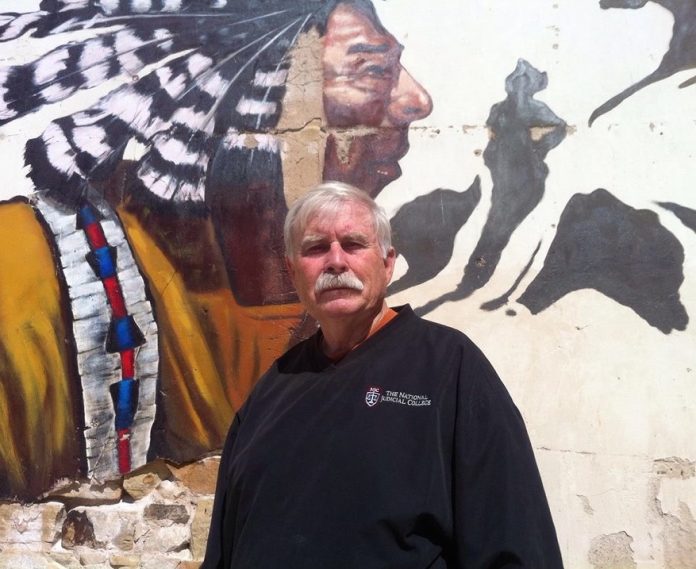Politics in Real-Time
What’s it like to be a political scientist in these fast-moving, politically fraught times? “It’s exciting, it’s disorienting, it’s invigorating, and it’s frightening—all at once,†says Paul Musgrave, assistant professor of political science at the University of Massachusetts Amherst. Since 2016, Musgrave, an expert on international relations, has amassed more than 40,000 Twitter followers @profmusgrave; has appeared on CNN, MSNBC, al-Jazeera, and elsewhere; and has been quoted in the Washington Post, the New York Times, and other media outlets.
Musgrave spent the spring 2020 semester as an American Political Science Association Congressional Fellow in Washington, DC. He was serving as a legislative aide to Representative Matt Cartwright of Pennsylvania when COVID-19 disrupted Congress. “In the House, we introduced bills, we worked on amendments, we drafted legislation, we kept the whole process going even while everyone except for very few people went home,†he says. “It was a tremendously innovative time and fascinating to see the transition. For me, it drove home how important relationships are—much more important than the buildings or other trappings of Congress.â€
During his congressional semester, Musgrave witnessed legislation in real-time. “It’s one thing to study politics or work with historical material or read transcripts. It’s another thing to be sitting behind a member of Congress and feel the honor of representing folks and also the fear of missing something in your research or preparation.â€
In Washington, Musgrave advocated for support for funded internships on Capitol Hill so that this opportunity can be accessible to more students. “I want to help UMass students pursue careers in public service,†he says.
He returned from his fellowship with guidance for students. “I’ll be teaching them to write shorter, but more informative, papers,†he says. “When you brief a member of Congress on a bill you need to make a cogent case of its benefits and pitfalls in three to four sentences. It’s possible.†He’ll also reinforce the importance of learning things on the fly and being adaptable. “Working in government, you’ve got to roll into new situations, pick up what you need to know, and have the confidence and competence to accomplish things,†he says. “Our UMass students can do that.â€
One September day, having tweeted earlier about President Trump’s tax returns, the Supreme Court, voting by mail, remote learning, and ancient philosophers (he wondered which one would give the best Ted Talk), Musgrave reflected on the relevance of Twitter: “If you study politics, you just have to be there.†He keeps up with news, colleagues, and research on Twitter and sees his own tweets as an escape valve. “It’s flattering and bewildering to me that people want to hear this,†he says. “It shows me how eager people are for humor and connection.â€
Back to teaching in the fall 2020 semester, Musgrave finds his UMass students curious and energized. “Although the politics of the past is not the politics of today, there is not nearly as much cynicism among students as among older adults,†he says. “They have a good sense of what is at risk and many already have figured out what they want to do politically.â€
FOOTNOTE:Â Dr. Paul Musgrave is a graduate of Reitz High School, a Wells Scholar at IU, a Marshall Scholar at University College Dublin, Ireland, and received a Masters and Doctoral degree from Georgetown University. Â He is an Associate Professor of American Foreign Policy at the University of Massachusetts in Amherst, MA.












 1917   James Bethel Gresham, from Evansville, was killed in action in a battle near Artois, France. The 23-year-old Army Corporal was the first Hoosier, and one of the first three Americans, to die in combat during World War I. He and his comrades were buried on the battlefield where they fell, but Gresham’s remains were later returned to Evansville and interred at Locust Hill Cemetery.
1917   James Bethel Gresham, from Evansville, was killed in action in a battle near Artois, France. The 23-year-old Army Corporal was the first Hoosier, and one of the first three Americans, to die in combat during World War I. He and his comrades were buried on the battlefield where they fell, but Gresham’s remains were later returned to Evansville and interred at Locust Hill Cemetery. 1935   Amelia Earhart was the special guest of the Hammond Junior Women’s Club at the Lyndora Hotel. Introduced by Mayor Frank R. Martin, the famous flyer fascinated the audience as she spoke of her solo flights over the Atlantic and Pacific Oceans. A dinner was followed by ice cream desserts topped with airplane motifs. She later spoke to 900 people at Hammond High School. As she described her adventures, she said she loved flying “for the beauty of the view over land and sea.”
1935   Amelia Earhart was the special guest of the Hammond Junior Women’s Club at the Lyndora Hotel. Introduced by Mayor Frank R. Martin, the famous flyer fascinated the audience as she spoke of her solo flights over the Atlantic and Pacific Oceans. A dinner was followed by ice cream desserts topped with airplane motifs. She later spoke to 900 people at Hammond High School. As she described her adventures, she said she loved flying “for the beauty of the view over land and sea.” 1942   Arcada Stark Balz became the first woman elected to the Indiana State Senate. Born on a farm near Bloomington, she had grown up in Indianapolis and attended Manual High School. A teacher of history, literature, and art, she had also served as president of the Indiana Federation of Women’s Clubs. In the Senate, she represented Johnson and Marion Counties.
1942   Arcada Stark Balz became the first woman elected to the Indiana State Senate. Born on a farm near Bloomington, she had grown up in Indianapolis and attended Manual High School. A teacher of history, literature, and art, she had also served as president of the Indiana Federation of Women’s Clubs. In the Senate, she represented Johnson and Marion Counties.





